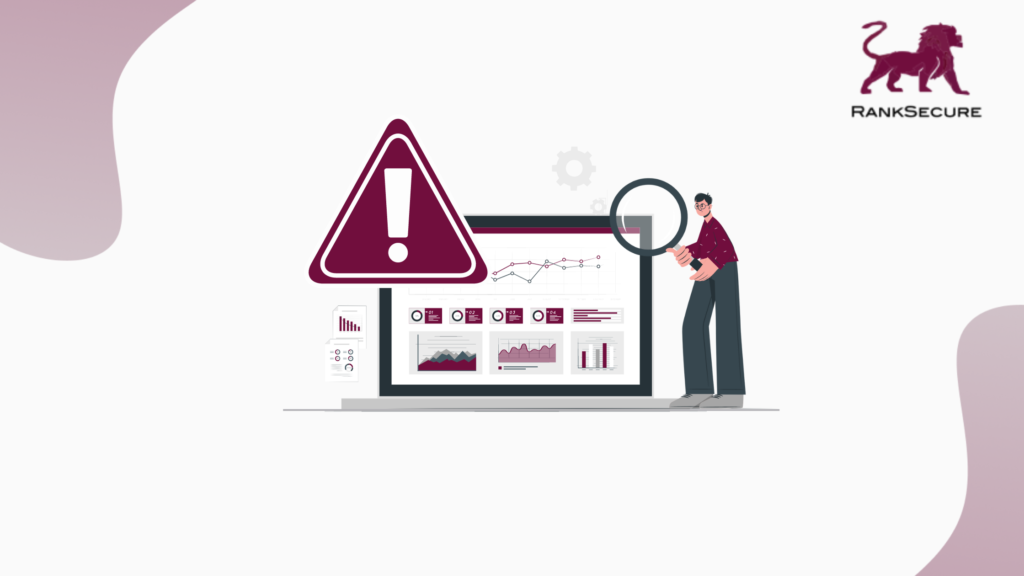
Avoid these 5 Common Mistakes When Choosing a Vulnerability Assessment Company
Selecting the right vulnerability assessment provider can mean the difference between a robust cybersecurity posture and leaving your organisation exposed to potential threats. In today’s digital age, where data breaches and cyberattacks are a constant threat, making the wrong choice can have severe consequences.
This blog post dives straight into the common mistakes organisations often make when choosing a vulnerability assessment company. We won’t beat around the bush because we understand how critical your organisation’s security is to you. Whether you’re a cybersecurity veteran or just starting, read on to discover these pitfalls and how to steer clear of them.
Mistake #1: Lack of Clarity in Objectives
When it comes to selecting a vulnerability assessment provider, one of the most common mistakes organisations make is failing to define clear objectives for the assessment. This lack of clarity can lead to a range of issues throughout the assessment process and its aftermath.
Why Clarity in Objectives Matters
Targeted Assessment
Without clear objectives, it’s challenging to pinpoint what aspects of your IT infrastructure or applications need assessment. This can result in a broad and unfocused evaluation that doesn’t adequately address your specific vulnerabilities.
Inadequate Risk Mitigation
When objectives are unclear, you may miss critical vulnerabilities that pose significant risks to your organisation. This oversight can leave your business exposed to potential cyber threats.
Resource Inefficiency
A vague assessment objective can waste valuable time and resources, as the provider may spend unnecessary effort on areas that aren’t of immediate concern to your organisation.
Examples of Vague Objectives and Consequences
Vague Objective: “Assess our network for vulnerabilities.”
Consequence: The provider might conduct a generic scan, but it won’t necessarily target the areas of your network most susceptible to attacks.
Clear Objective: “Identify and assess vulnerabilities in our web-facing applications to secure customer data.”
Benefit: This specific objective ensures that the assessment focuses on the critical applications that handle sensitive information, reducing the risk of data breaches.
For instance, if you have recently transitioned to a cloud-based model, conveying that information to your vulnerability assessment team would be beneficial for them to accurately examine and overcome potential challenges in your cloud infrastructure.
Mistake #2: Ignoring Industry Experience
It’s easy to assume that any vulnerability assessment company can perform effective risk evaluations, but the truth is that industry-specific knowledge can make a significant difference in the quality and relevance of the assessments.
Why Industry Experience is Crucial
Understanding Unique Threat Landscapes
Different industries face varying cybersecurity threats and challenges. For example, financial institutions may be more susceptible to financial fraud, while healthcare organisations may be concerned about patient data breaches. A provider with experience in your industry will understand these specific threat landscapes.
Compliance and Regulation
Many industries have specific regulations and compliance standards that must be adhered to. For instance, the financial sector has its own set of regulations (such as PCI DSS), and healthcare follows HIPAA. A provider familiar with these regulations will help ensure your assessments are compliant.
Tailored Assessment Approaches
Industry experience enables a vulnerability assessment provider to tailor their approach to the unique needs of your sector. They will have insights into the types of vulnerabilities that are most relevant and can prioritise them accordingly.
The Consequences of Neglecting Industry Experience
If you overlook industry experience when selecting a vulnerability assessment company, you run the risk of assessments that are generic and fail to address the specific threats and vulnerabilities relevant to your organisation. This can result in:
- – Missed vulnerabilities that are unique to your industry.
- – Ineffective recommendations that do not align with industry best practices.
- – Compliance violations that could lead to regulatory fines and legal issues.
Mistake #3: Focusing Solely on Cost
When selecting a vulnerability assessment company, organisations may place too much emphasis on cost alone, and that could become a problem. While it’s natural to be mindful of your budget, choosing a provider solely based on their price can lead to significant cybersecurity risks and financial repercussions in the long run.
Here’s why focusing solely on cost is a mistake
Limited Quality Assurance
Lower-cost providers may cut corners to offer competitive pricing. This can result in less thorough assessments, missed vulnerabilities, and reduced overall quality.
Inadequate Expertise
Extremely budget-friendly providers might lack the experienced cybersecurity professionals necessary to identify and address complex vulnerabilities effectively.
Hidden Costs
What appears to be a cost-effective choice upfront may turn out to be more expensive when you factor in hidden costs, such as the need for additional assessments or remediation due to incomplete initial assessments.
Limited Support
These providers may offer limited post-assessment support, leaving you on your own when it comes to addressing discovered vulnerabilities or understanding assessment reports.
Mistake #4: Not Assessing Compliance and Certification
One crucial mistake that organisations make when selecting a vulnerability assessment company is overlooking their compliance with industry standards and relevant certifications.
Importance of Compliance
- – Compliance with industry standards, such as ISO 27001 or the NIST Cybersecurity Framework, ensures that the provider follows best practices and recognised guidelines in the field of cybersecurity.
- – These standards often outline specific requirements for conducting vulnerability assessments, and non-compliance may result in incomplete or inadequate assessments.
Certifications Matter
- – Many reputable vulnerability assessment providers seek certifications from recognised organisations like CREST (Council of Registered Ethical Security Testers) or CISSP (Certified Information Systems Security Professional).
- – These certifications demonstrate that the provider’s personnel have the necessary skills and expertise to conduct assessments effectively.
Avoiding Legal and Regulatory Issues
Failure to choose a compliant provider can lead to legal and regulatory issues. For example, if your industry requires adherence to specific data protection regulations, the chosen provider must be compliant to avoid potential fines or penalties.
Action Steps
- – Before finalising your choice of a vulnerability assessment company, inquire about their compliance with industry standards and certifications.
- – Request documentation or evidence of their compliance, and verify the validity of any certifications they claim.
- – Ensure that the provider’s compliance aligns with the specific requirements of your industry and regulatory environment.
Mistake #5: Skipping a Test Run or Pilot
When selecting a vulnerability assessment company, most organisations skip a test run or pilot assessment. This oversight can have significant repercussions on the quality and effectiveness of the vulnerability assessment process. Here’s why you should never bypass this crucial step:
Lack of Familiarity: Without a test run or pilot assessment, you may be jumping into a full-scale vulnerability assessment without a clear understanding of the provider’s approach, tools, and methodologies. This lack of familiarity can lead to misunderstandings and misaligned expectations during the actual assessment.
Unidentified Workflow Issues: A test run or pilot allows both parties to identify any workflow issues or logistical challenges that may arise during the assessment. This includes problems with data collection, communication, or the timing of scans. Addressing these issues early can prevent delays and disruptions later on.
Verification of Tools and Methods: During a pilot assessment, you can verify that the tools and methods the provider intends to use are suitable for your environment. It’s an opportunity to assess the accuracy and effectiveness of vulnerability scanning tools and methodologies in your specific context.
Risk Mitigation: By conducting a test run, you can identify and mitigate potential risks early in the process. This proactive approach helps prevent surprises or security gaps that might emerge during the full-scale assessment.
Conclusion
The choice of a vulnerability assessment provider can make or break your organisation’s cybersecurity posture. The potential consequences of making the wrong choice are too significant to ignore. Therefore, remember to make informed decisions and stay vigilant in the ever-evolving landscape of cybersecurity threats. Your organisation’s security is worth the effort.
Recent Posts
What Is Patch Management? A Beginner’s Guide to Cybersecurity
When you study the world’s most damaging cyberattacks, one pattern keeps showing up. It is not always the cutting-edge zero-day exploit or the advanced persistent threat that breaks systems. It is often a known vulnerability, with a patch available, left unapplied for weeks or months. In every case,
The Real Reason Breaches Happen: Patch Delays
“A patch was available, but not applied in time.” That line keeps showing up, in regulatory findings, cyber insurance disputes, and boardroom debriefs. And for good reason: most successful attacks do not rely on novel techniques. They exploit known, fixable weaknesses. In fact, over 60 percent of breaches
What Is IT Asset Management? A Comprehensive Beginner’s Guide
Step inside any modern enterprise, and you’ll find an ever-expanding digital footprint: endpoints humming across departments, SaaS platforms proliferating faster than they’re being audited, cloud instances spun up without governance, and workloads moving in real time. It’s a playground and a potential minefield. Unmonitored endpoints become soft targets.






